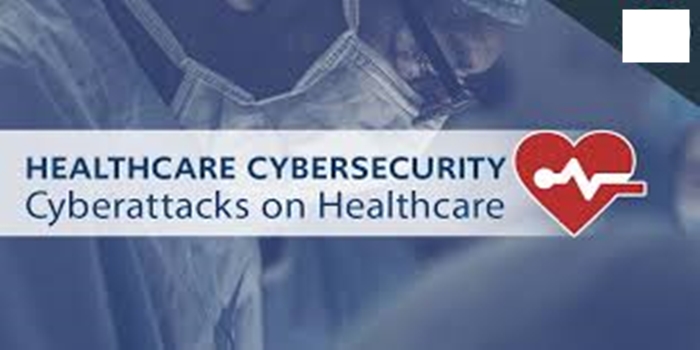In this article, we discussed cybersecurity in healthcare, the element, the common cybersecurity threats in healthcare, the importance and the consequences of cyber-attack.
Definition
Cybersecurity in healthcare refers to the safety of digital possessions, electronic systems, patient data, and IT structure within healthcare organizations against cyber threats. The healthcare sector has become a prime target for cybercriminals due to its heavy reliance on interconnected digital systems and the value of sensitive medical information.
The Elements of Cybersecurity in Healthcare:
- Protecting Patient Data:
Confidentiality, Integrity, and Availability:
Cybersecurity measures aim to protect the confidentiality (keeping information private), integrity (ensuring data accuracy and reliability), and availability (ensuring access when needed) of sensitive patient information.
Compliance with Regulations:
Healthcare organizations must comply with regulations like HIPAA (Health Insurance Portability and Accountability Act) to protect patient data and avoid penalties.
- Securing Healthcare Infrastructure:
Network Security:
Protecting networks with firewalls, intrusion detection systems, and network segmentation to prevent unauthorized access to medical devices and clinical systems.
Device Management:
Implementing policies for how medical devices connect to networks, receive security updates, and maintain firmware.
Data Encryption:
Protecting patient records, both in storage and during transmission, using encryption techniques to ensure only authorized parties can access the information.
Access Control:
Implementing strong access control mechanisms like secure login credentials, multi-factor authentication, and role-based access to restrict access to sensitive information and systems.
Endpoint Security:
Protecting devices used by healthcare staff, including laptops, smartphones, and other mobile devices, to prevent malware infections and data breaches.
- Ensuring Business Continuity:
Incident Response Plans:
Developing plans to handle cybersecurity incidents effectively, including data breaches, malware infections, and other attacks.
Backup and Recovery:
Implementing robust backup and recovery procedures to ensure business continuity in case of system failures or cyberattacks.
- Fostering a Security Culture:
Employee Training:
Educating healthcare staff about cybersecurity risks, best practices, and how to identify and respond to potential threats.
Promoting Security Awareness:
Encouraging a culture of security awareness throughout the organization to minimize the risk of human error and social engineering attacks.
- Continuous Monitoring and Improvement:
Vulnerability Assessments:
Regularly assessing the security posture of systems and infrastructure to identify and address vulnerabilities.
Threat Intelligence:
Staying informed about emerging cyber threats and adapting security measures accordingly.
Security Audits:
Conducting regular audits to ensure compliance with security policies and identify areas for improvement.
Common Cybersecurity Threats in Healthcare:
Ransomware: Encrypts critical systems and demands payment for data recovery. This can significantly disrupt operations, impact patient care, and lead to financial losses.
Phishing: Deceptive emails or messages tricking employees into revealing sensitive information or downloading malware, leading to data breaches and system compromises.
Insider Threats: Unintentional or malicious actions by employees can expose sensitive data. Weak access controls and lack of awareness exacerbate this risk.
Data Breaches: Unauthorized access or disclosure of patient records can lead to legal penalties, reputational damage, and potential harm to patients.
Medical Device Vulnerabilities: Hackers can exploit weaknesses in medical devices (like pacemakers or insulin pumps) to alter functionality, potentially endangering patients.
Supply Chain Attacks: Infiltrating healthcare systems through third-party vendors or service providers.
DDoS Attacks: Overwhelming a network with traffic to disrupt operations.
Malware: Malicious software that can disrupt systems and steal data.
Zero-day Exploits: Attacks targeting previously unknown software vulnerabilities.
Business Email Compromise (BEC): Scammers using spoofed emails to trick employees into fraudulent transactions.
Impacts of Cybersecurity Threats:
Disruption of patient care:
Delays in treatment, inability to access medical records, and compromised medical devices can all negatively affect patient care.
Financial losses:
Ransom payments, legal penalties, and costs associated with recovery from attacks can be substantial.
Reputational damage:
Data breaches and other cyber incidents can erode public trust in healthcare organizations.
Legal and regulatory penalties:
Healthcare organizations are subject to strict regulations regarding patient data privacy, and breaches can lead to significant fines.
Potential harm to patients:
Hackers targeting medical devices or manipulating patient records can directly harm patients.
Importance of Cybersecurity in Healthcare
Patient Safety: Compromised systems can delay or misdirect care, potentially leading to injury or death.
Data Protection: Medical records include sensitive personal, financial, and clinical data.
Operational Continuity: Healthcare providers rely on digital systems for appointments, imaging, prescriptions, and surgeries.
Legal and Financial Risks: Breaches can result in heavy fines, lawsuits, and regulatory penalties.
Trust and Reputation: Patients must trust providers to safeguard their private information.
Consequences of Cyber Attacks
Clinical Impact
Interruptions to surgeries, lab testing, and medication delivery.
Misdiagnosis due to corrupted data.
Financial Impact
Average cost of a healthcare breach: $10.93 million (IBM, 2023).
Includes ransomware payments, system restoration, lawsuits, and lost revenue.
Legal and Regulatory Impact
HIPAA violations in the U.S. can result in fines up to $1.5 million per year.
GDPR in Europe imposes fines of up to €20 million or 4% of annual revenue.
Reputational Damage
Patients may lose trust, leading to reduced service utilization or lawsuits.
Conclusion
Cybersecurity in healthcare is not just an I T issue, it’s a matter of patient safety, ethical responsibility, and organizational integrity. As digital health tools proliferate, the sector must adopt robust, scalable, and ethical cybersecurity strategies. Balancing innovation with observance will be the most important to protecting healthcare systems, data, and the lives they serve.
READ: Cyber Attacks


